

Max Davies
2025 Toyota Corolla SX review
6 Days Ago
How do these workhorse twins compare and contrast? Although they're twins under the skin, there are plenty of differences as well.

Senior Contributor
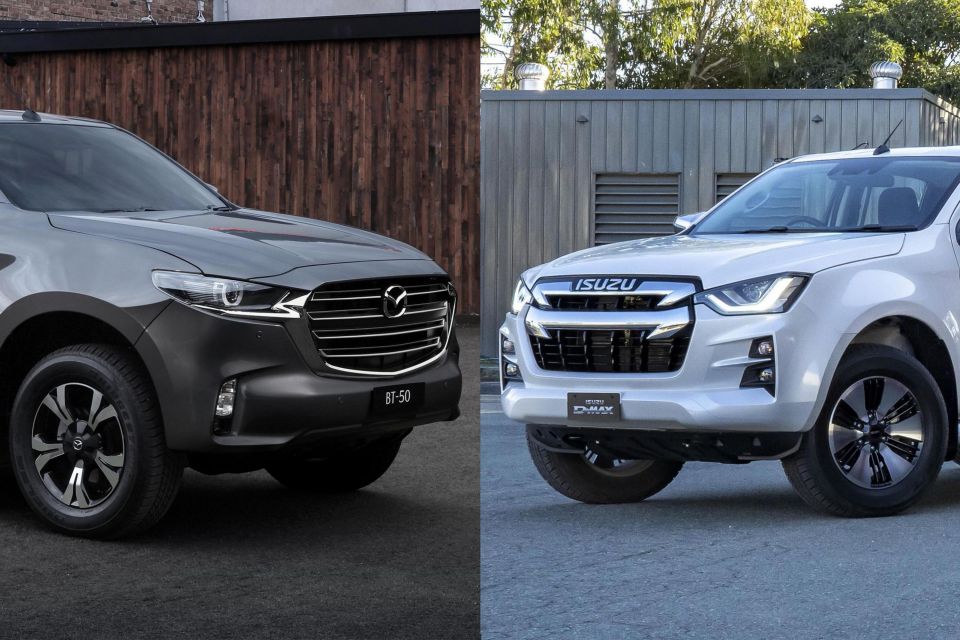

Senior Contributor
We all know the new Mazda BT-50 was derived from the Isuzu D-Max rather than the Ford Ranger for this generation.
Now we have pricing and specifications for both models, it seems wise to contrast them. We’re lining up a ‘proper’ comparison test when possible, but for now this will hopefully give some insights.
Naturally there are some stylistic differences. The cabins look different too, with divergent vents, trim colours and steering wheel hubs.
Isuzu also offers an extra year of warranty (six versus five), but the former is capped at 150,000km unlike the latter.
In short
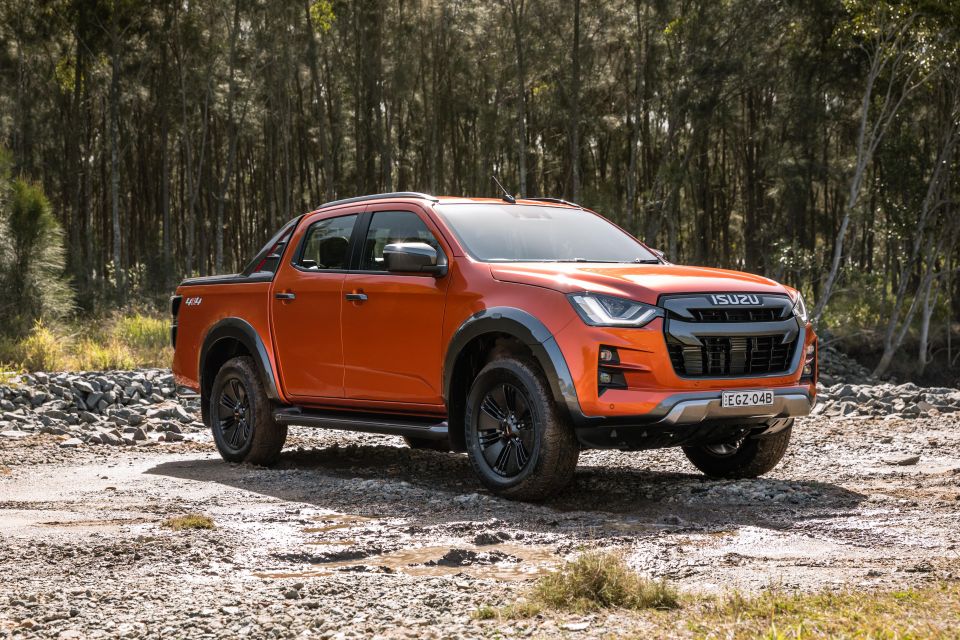
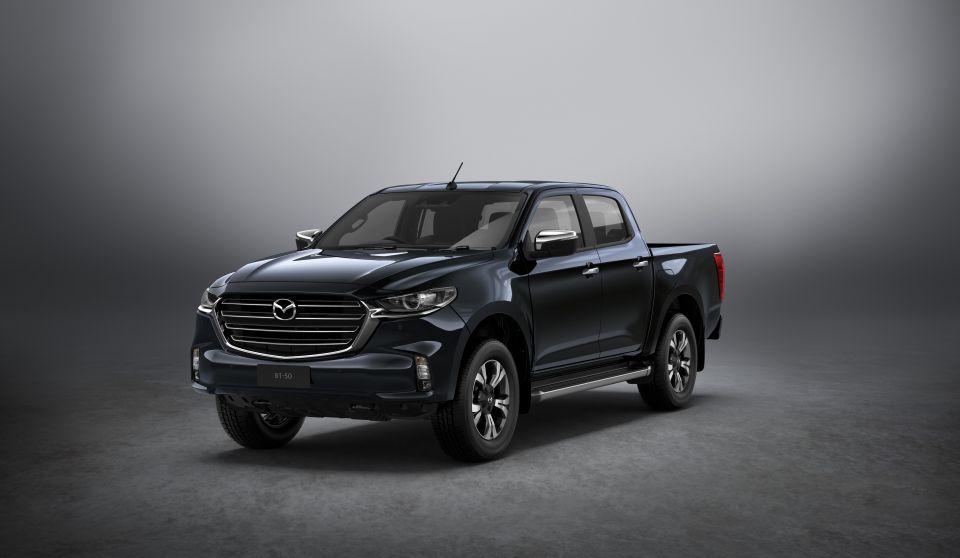
This pair are the range-toppers, and both are solely dual-cab utes with 4×4.
The D-Max X-Terrain is available with an automatic transmission only, whereas the BT-50 GT is available as a manual or auto.
Isuzu is already selling the top-of-the-range D-Max at special drive-away pricing, whereas Mazda is yet to announce any specific national deals.
Let’s look at features they have in common. The table below shows mechanical and capacities.
| Isuzu D-Max X-Terrain | Mazda BT-50 GT | |
|---|---|---|
| Engine | 3.0 litre, 4-cyl, diesel | 3.0 litre, 4-cyl, diesel |
| Power | 140kW @ 3600rpm | 140kW @ 3600rpm |
| Torque | 450Nm @ 1600rpm | 450Nm @ 1600rpm |
| Fuel use | 8.0L/100km | 7.7-8.0L/100km |
| Trans | 6AT | 6MT/6AT |
| Drive | Part-time 4×4 | Part-time 4×4 |
| Weight | 2130kg | 2025-2035kg |
| Payload | 970kg | 1065-1075kg |
| Tow rating | 3500kg | 3500kg |
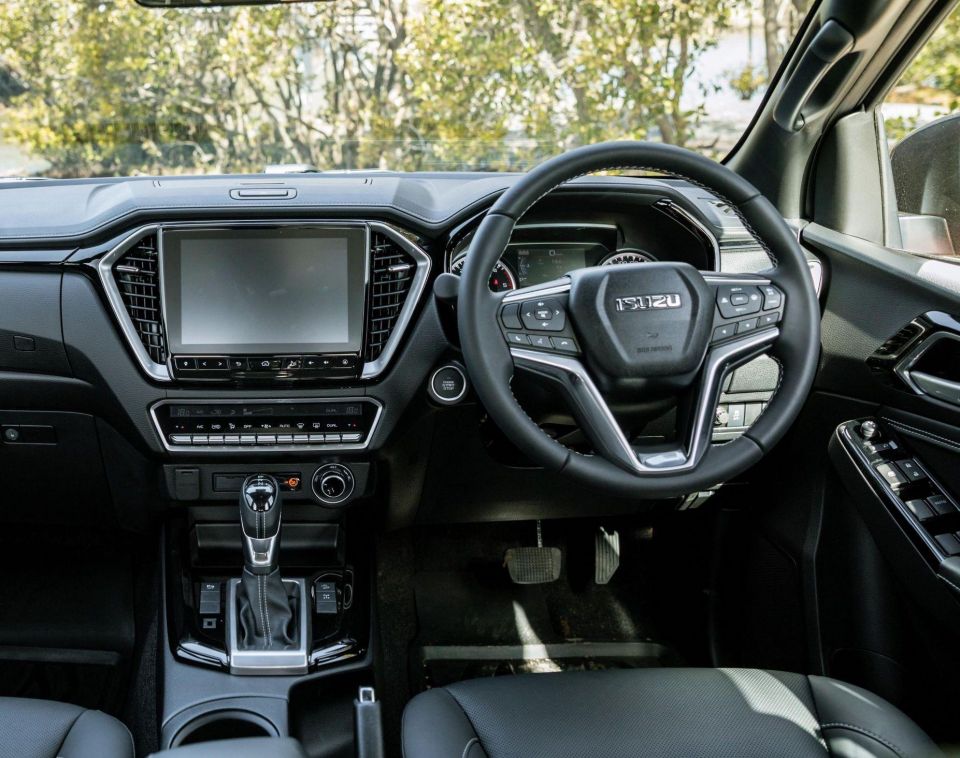
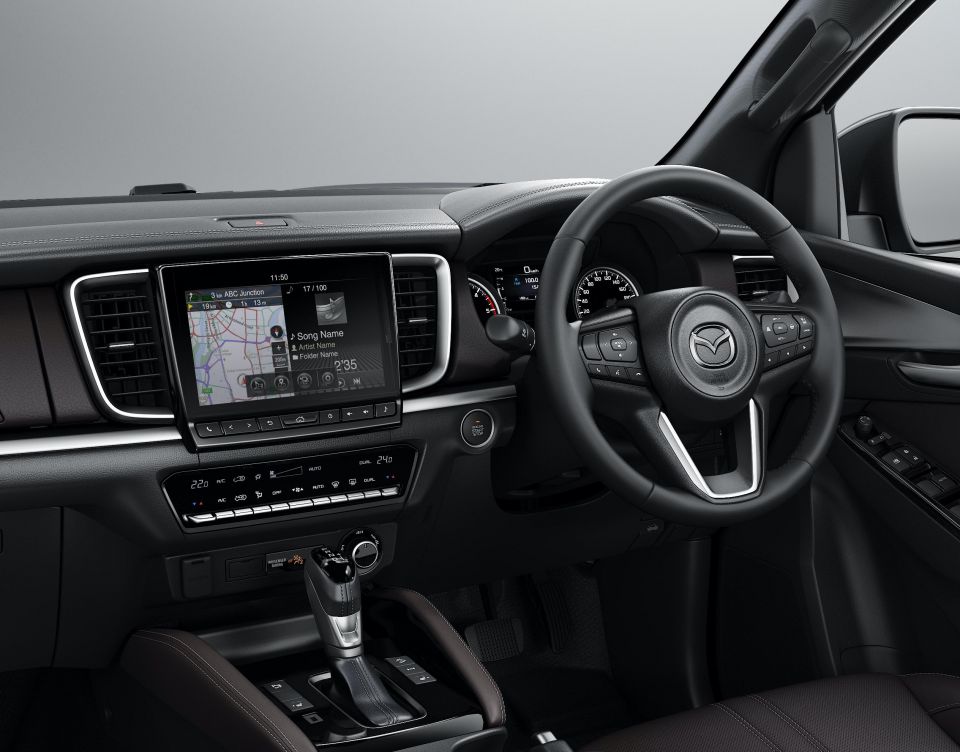
Now, what about safety features? They both have the longest list of active safety features in the class, across all variants.
| Isuzu D-Max X-Terrain | Mazda BT-50 GT | |
|---|---|---|
| Airbags | Eight | Eight |
| AEB forward, and turning | Yes | Yes |
| Forward collision alert | Yes | Yes |
| Post-collision braking | Yes | Yes |
| Active cruise control | Yes | Yes (6AT) |
| Traffic-sign recognition | Yes | Yes |
| Misacceleration mitigation pedal | Yes | Yes (6AT) |
| Lane-keeping aids | Yes | Yes |
| Driver attention monitor | Yes | Yes |
| Blind-spot monitor | Yes | Yes |
| Rear cross-traffic alert | Yes | Yes |
| Auto high beam | Yes | Yes |
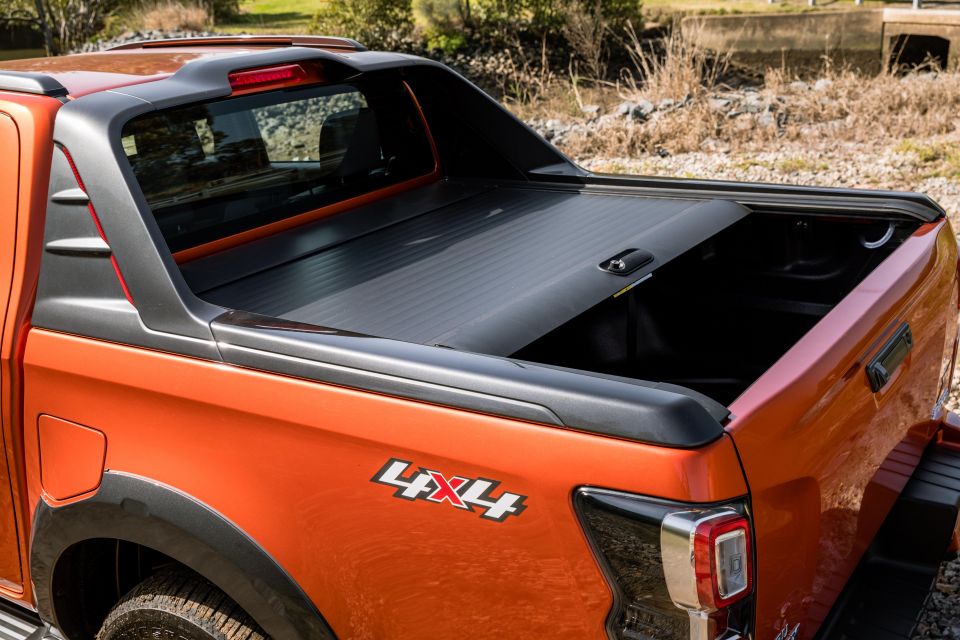

What about some key features? Differences in bold.
| Isuzu D-Max X-Terrain | Mazda BT-50 GT | |
|---|---|---|
| Wheels | 18-inch alloy | 18-inch alloy |
| Tyres | 265/60 | 265/60 |
| Headlights | Auto-levelling LED | Auto-levelling LED |
| Parking sensors | Front/rear | Front/rear |
| Side mirrors | Power folding | Power folding |
| Side steps | Yes | Yes |
| Roof rails | Yes | No |
| Proximity key | Yes | Yes |
| Remote start | Yes | Yes |
| Tub features | Tub liner, roller hard-tonneau cover, body kit | Accessories catalogue |
| Colours | White solid, grey mica, blue mica, red mica, black mica, silver metallic, orange metallic, white pearl | White solid, grey mica (x 2), blue mica, red mica, black mica, silver metallic |
| Touchscreen | 9.0-inch | 9.0-inch |
| Sat-nav | Yes | Yes |
| Apple CarPlay | Wireless | Wireless |
| Android Auto | Wired | Wired |
| Camera view | Reverse | Reverse |
| A/C type | Dual-zone climate control | Dual-zone climate control |
| Auto-dimming rear-view mirror | No | Yes |
| Seat material | Black leather | Brown leather |
| Seat heating | No | Yes |
| Floors | Carpet | Carpet |
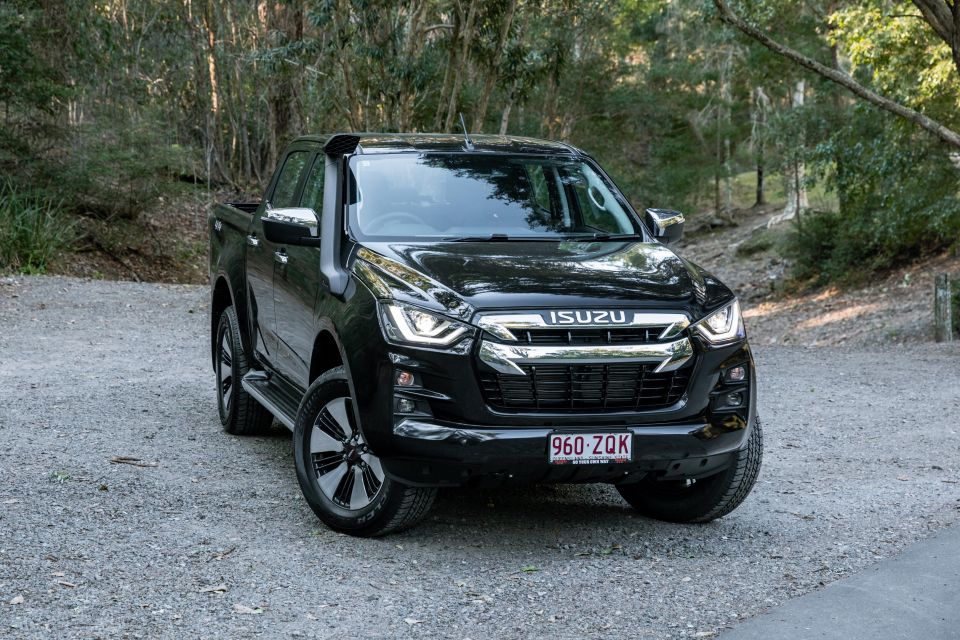

This pair sit a rung below the flagships on the variant totem pole.
Both the D-Max LS-U and BT-50 XTR come in dual-cab body configurations with either 4×2 or 4×4 – the latter with manual or auto transmissions (Mazda charges $500 more than Isuzu for the same Aisin 6AT).
They sport the same engine as the range-toppers.
| Isuzu D-Max LS-U | Mazda BT-50 XTR | |
|---|---|---|
| Fuel use | 7.7L-8.0L/100km | 7.7L-8.0L/100km |
| Trans | 6MT/6AT | 6MT/6AT |
| Drive | 4×2 and 4×4 | 4×2 and 4×4 |
| Weight | 4×2: 1960kg 4×4: 2035-2045kg | 4×2: 1945kg 4×4: 2020-2030kg |
| Payload | 4×2: 1040kg 4×4: 1055-1065kg | 4×2: 1055kg 4×4: 1070-1080kg |
What are some of the key feature differences? If something is not listed in the table, then assume it’s the same as the X-Terrain/GT.
| Isuzu D-Max LS-U | Mazda BT-50 XTR | |
|---|---|---|
| Parking sensors | Rear | Rear |
| Tub features | Accessories catalogue | Accessories catalogue |
| Roof rails | No | No |
| Body kit | No | No |
| Handles and mirrors | Silver | Silver |
| Seat trim | Cloth | Cloth |
| Seat adjust | Manual | Manual |
| Proximity key | No | Yes |
| Button start | No | Yes |
| Remote start | No | No |
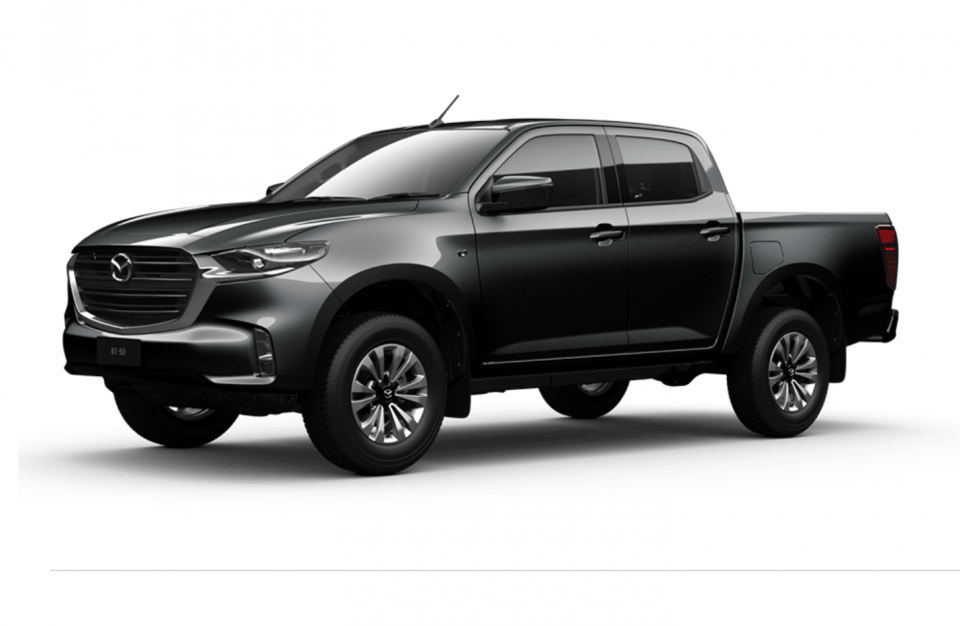
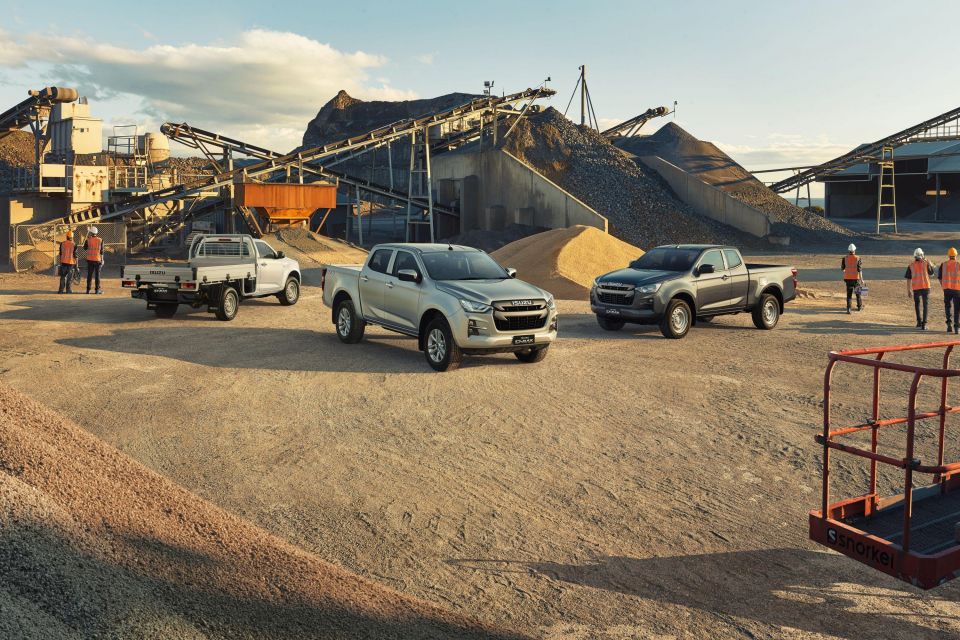
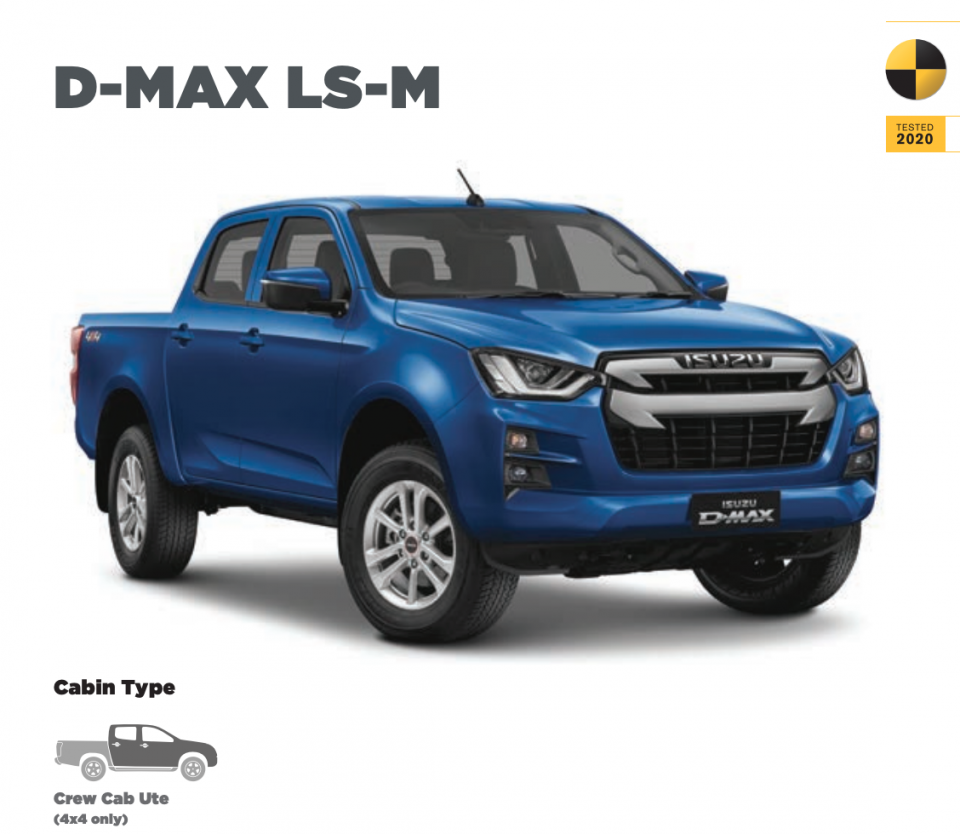
Isuzu offers two workhorse grades called LS-M, and SX, while Mazda offers just the one, called XT.
The LS-M is only available as a 4×4 dual-cab ute body with manual or automatic transmissions. It alone gets all-terrain tyres as standard, and picks up heavier duty suspension from the cab chassis versions.
The D-Max SX dual-cab grades come in cab-chassis and ute body styles in both 4×2 and 4×4 configurations. It’s the same story for the BT-50 XT, though Mazda’s premium for the ute tub over the cab-chassis is $200 greater than Isuzu’s.
They sport the same engine as the range-toppers.
| Isuzu D-Max SX | Isuzu D-Max LS-M | Mazda BT-50 XT | |
|---|---|---|---|
| Fuel use | 7.7L-8.0L/100km | 7.7L-8.0L/100km | 7.7L-8.0L/100km |
| Trans | 6MT/6AT | 6MT/6AT | 6MT/6AT |
| Drive | 4×2 and 4×4 | 4×4 | 4×2 and 4×4 |
| Weight | 4×2: 1825-1950kg 4×4: 1900-2035kg | 4×4: 2020-2030kg | 4×2: 1805-1925kg 4×4: 1880-2010kg |
| Payload(cab chassis measured pre tray fitment) | 4×2: 1050-1175kg 4×4: 1065-1200kg | 4×4: 1070-1080kg | 4×2: 1075-1195kg 4×4: 1090-1220kg |
| Rear leaf suspension | Ute: Standard Cab-chassis: ‘Heavy duty’ | Heavy duty | Ute: Standard Cab-chassis: ‘Heavy duty’ |
What are some of the key feature differences? If something is not listed in the table, then assume it’s the same as the aforementioned.
| Isuzu D-Max SX | Isuzu D-Max LS-M | Mazda BT-50 XT | |
|---|---|---|---|
| Wheels | 17-inch steel | 17-inch alloy | 17-inch steel |
| Tyres | 255/65 AT | 255/65 AT | 255/65 AT |
| Floors | Vinyl | Vinyl | Carpet |
| A/C | Manual | Manual | Manual |
| Touchscreen | 7.0-inch | 7.0-inch | 7.0-inch |
| Sat-nav | No | No | No |
| Apple CarPlay | Yes | Yes | Yes |
| Android Auto | Yes | Yes | Yes |
| Reversing camera | Yes | Yes | Yes |
| Sensors | No | No | Rear on ute body |
| Handles and mirrors | Black | Body colour | Body colour |
| Headlights | Halogen | LED | LED |
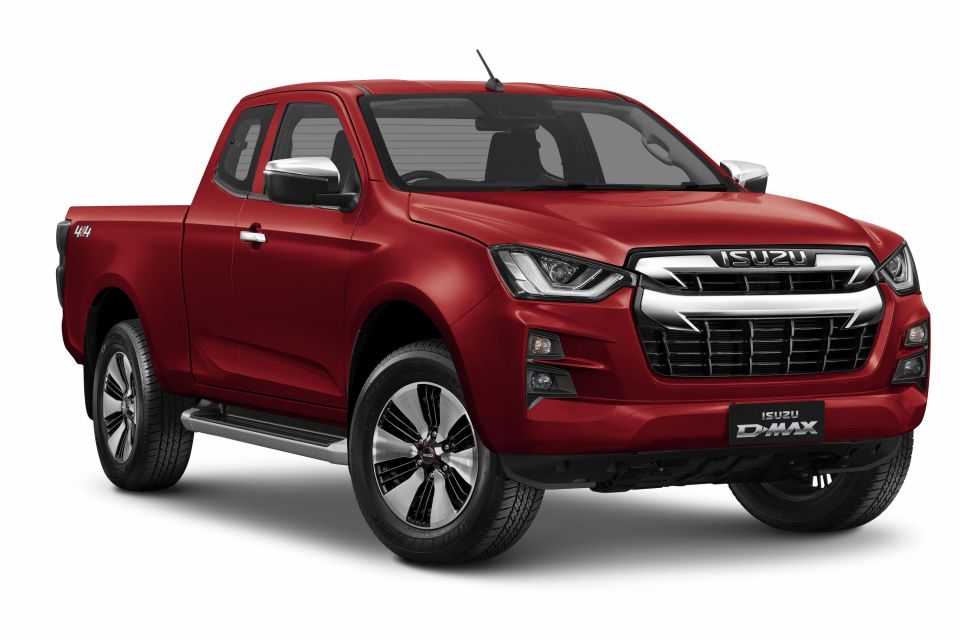
The BT-50 launch range is dual-cab only, but the D-Max’s range is broader from launch.
You can already order the LS-U in Space Cab Ute 4×4 form, and the SX in Space Cab Ute (4×2), Space Cab Chassis (4×4) and Single Cab Chassis (4×2 and 4×4). Read all about those here.


Max Davies
6 Days Ago


James Wong
4 Days Ago


James Wong
4 Days Ago


Max Davies
3 Days Ago


Josh Nevett
1 Day Ago


Max Davies
1 Day Ago